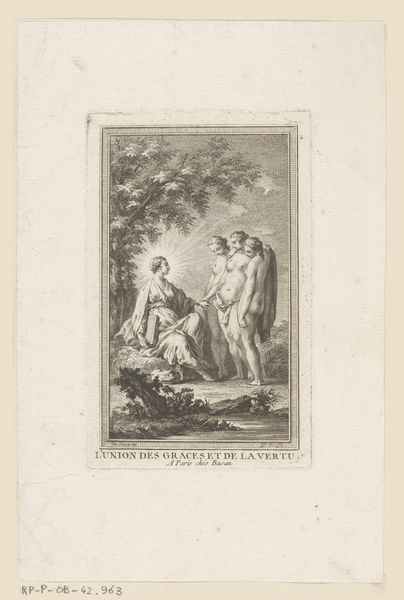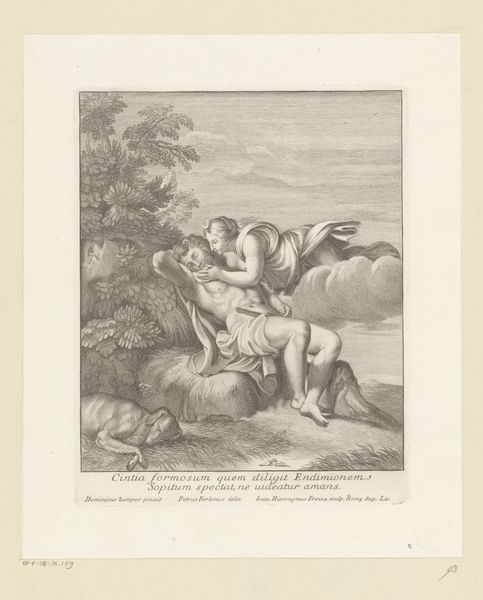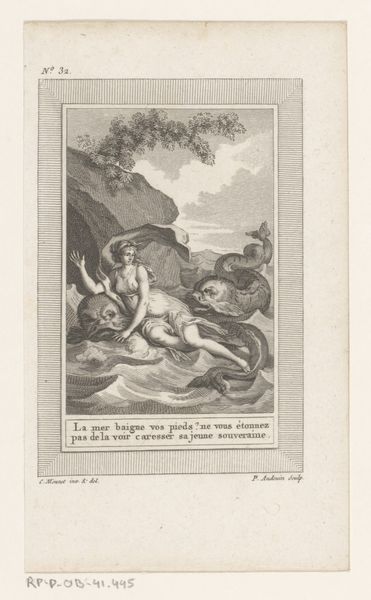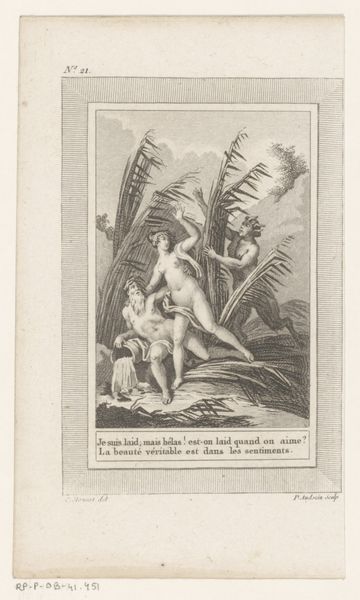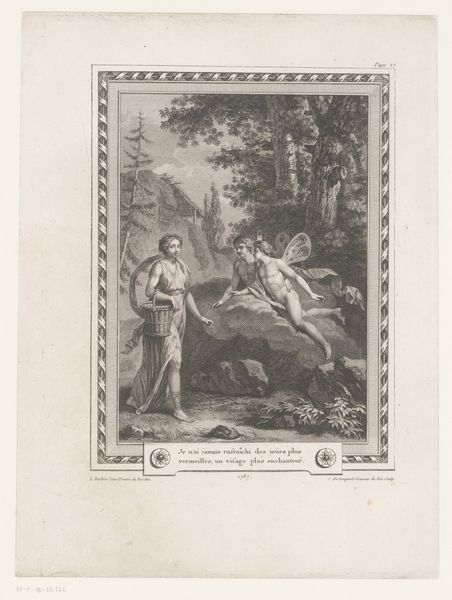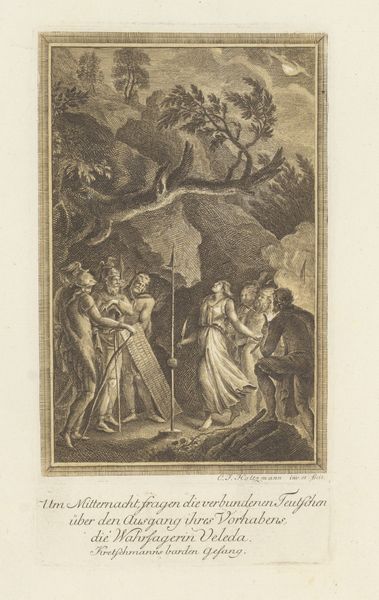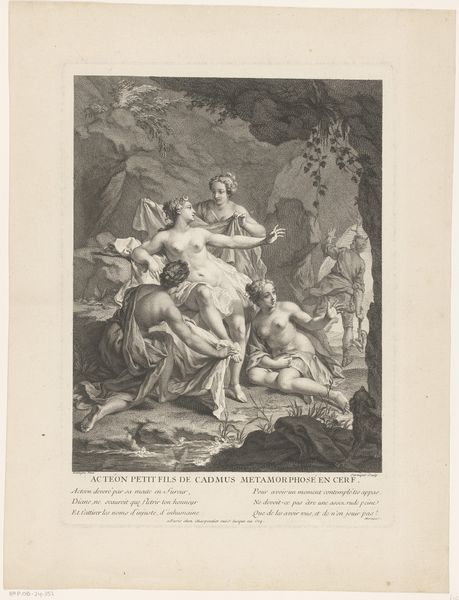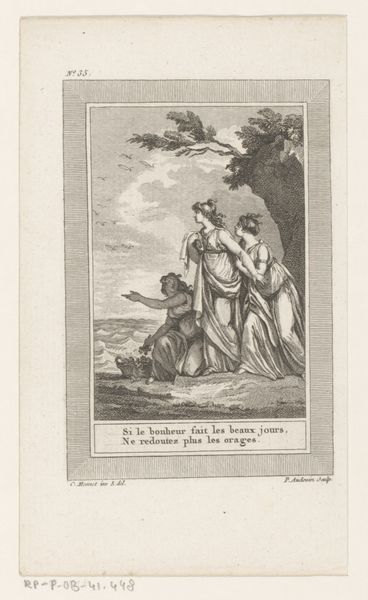
print, etching, engraving
#
neoclacissism
#
narrative-art
#
ink paper printed
#
parchment
# print
#
etching
#
greek-and-roman-art
#
old engraving style
#
figuration
#
19th century
#
line
#
history-painting
#
engraving
Dimensions: height 155 mm, width 92 mm
Copyright: Rijks Museum: Open Domain
Editor: This etching, “Polyphemos Discovers Acis and Galatea,” created by Pierre Audouin around 1801, shows a dramatic scene. It looks like a moment of tense discovery. The stark contrast and detailed lines really highlight the raw emotion. What can you tell me about it? Curator: Well, consider the Neoclassical style, a dominant artistic force at the time. How does it reflect the social and political upheavals occurring in Europe around 1801? Think about the rediscovery of classical values, particularly the focus on civic virtue, rationalism, and idealized forms. Are these ideals present here or being challenged? Editor: I see the idealized forms in the figures, but the situation isn’t very rational or virtuous. It feels… chaotic. Curator: Exactly! So, consider this artwork within its contemporary context. The French Revolution, with its own emphasis on liberty and reason, still had a palpable legacy. Art became a battleground. How does depicting a scene of passionate, jealous rage function as public imagery, perhaps even commenting on the ideals being espoused? Editor: I hadn’t considered it like that. Perhaps it's critiquing those ideals by showing their limits? Curator: Precisely. By focusing on such narratives from classical mythology, artists like Audouin found ways to comment on contemporary social dynamics. Consider how the myth of Polyphemos speaks to power, possession, and the dangers of unchecked emotion in a society struggling for stability. Editor: So it’s less a simple illustration and more a complex reflection on its time. Fascinating! Curator: Indeed. Looking at art through a socio-political lens unlocks so much understanding. Editor: This has really changed how I see this print. It’s not just a mythological scene, but a loaded commentary. Thank you!
Comments
No comments
Be the first to comment and join the conversation on the ultimate creative platform.

